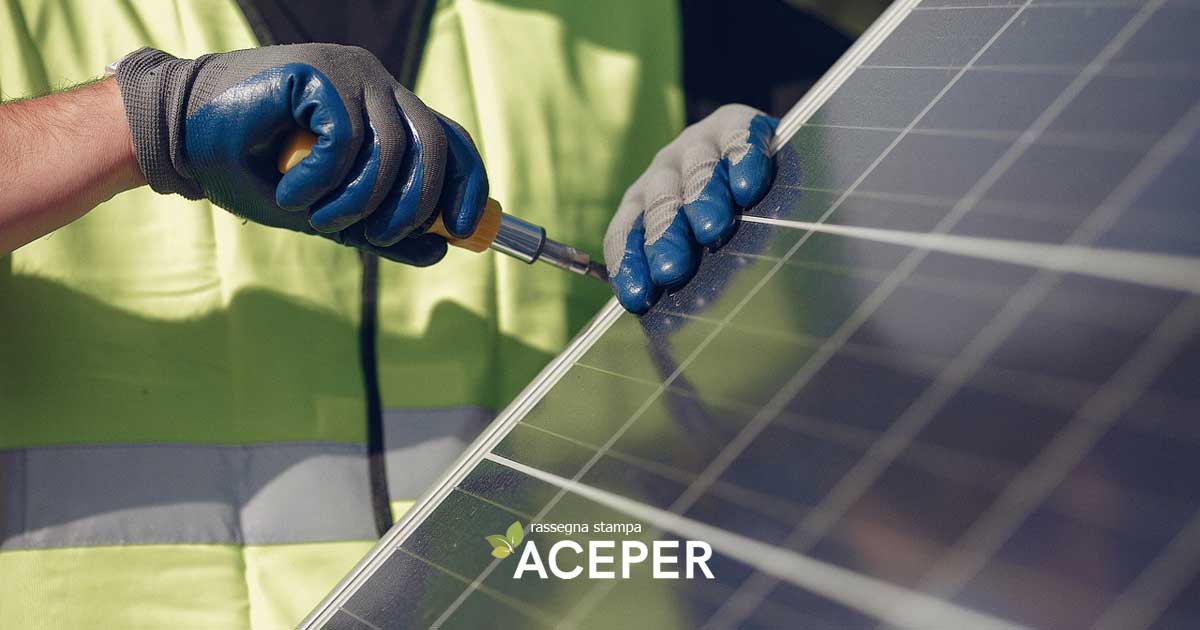20 February 2023

Milan, January 16, 2023 – The rise in energy bills has eased somewhat, but it hasn’t disappeared entirely. The risk of a sudden spike in energy prices is still looming.
If the contribution that each person can make to energy savings is important, it should not be forgotten that energy is primarily a national issue that must be addressed from a country-wide perspective. In light of the ongoing ecological transition and the challenges of relying on a limited number of gas suppliers, the ideal approach would be to focus on renewable energy, of which Italy has an abundance. Just consider that an adequate development of solar energy alone could reduce utility bills by up to 70%. This study on potential savings was conducted by Aceper, the Association of Consumers and Producers of Renewable Energy.
“Solar energy would have an immediate effect on reducing bills, cutting costs by 40% to 70%. By estimating an average cost reduction of 50% (within the 40% to 70% range), we could achieve total savings for Italian families of around 24 billion euros,” explains Veronica Pitea, president of Aceper, an association that includes 10,000 renewable energy production facilities, representing over 7,000 members with a total installed capacity exceeding 2 GWp. In short, the savings would be significant. However, there are several obstacles.
Starting with bureaucracy, but not only that. “We must also address important issues such as: the production of the raw materials necessary to undertake this work, the required workforce, and the disposal methods for batteries and panels at the end of their life,” continues Pitea. “Unfortunately, in Italy, bureaucracy, but especially the instability of our governments, slows down the massive installation of solar panels and the development towards renewable energy. Between the ‘Salva Italia’ decree, the ‘spalma incentivi’ measure, the Tremonti environment law, and windfall taxes, too often investors find themselves facing new costs and having to revise business plans because what the State promised becomes an unfulfilled promise with each change of government.” A European-level shift, with EU funding, could be helpful.
But the Brussels approach is not without problems. Consider the EU directive that requires reducing emissions from private buildings by renovating them to achieve energy class E by 2030. “The main issue,” continues the president of Aceper, “is that over 60% of our buildings are in class F/G, not to mention that the next step would be to bring them to class D… To reach these levels, we have to imagine a completely transformed Italy. We might say we would need a 110% effort multiplied probably by 1000.” In other words, the costs would be exorbitant.
However, to accomplish this massive transition, Pitea believes a similarly massive workforce will be needed. “Today, with the current demand in the solar energy sector, there are already about 500,000 missing workers; if we have to meet the EU timelines by 2030, we will probably need at least another 3 million. This includes many workers, electricians, engineers, surveyors, architects, and construction workers in all regions, without exception.”
In short, the transition could also be a driver for employment. But the development of solar energy will be crucial to achieving the European goal. This technology reduces CO2 emissions, one of the main causes of the ozone layer depletion. “To produce one kilowatt-hour of electricity, an average of 2.56 kWh equivalent of fossil fuels is burned, releasing approximately 0.53 kg of carbon dioxide into the air,” explains Pitea. “Therefore, each kWh produced by the solar system prevents the emission of 0.53 kg of CO2.”
See here the article from MSN dated 16/01/2023
“Source MSN”

Press review
For information


